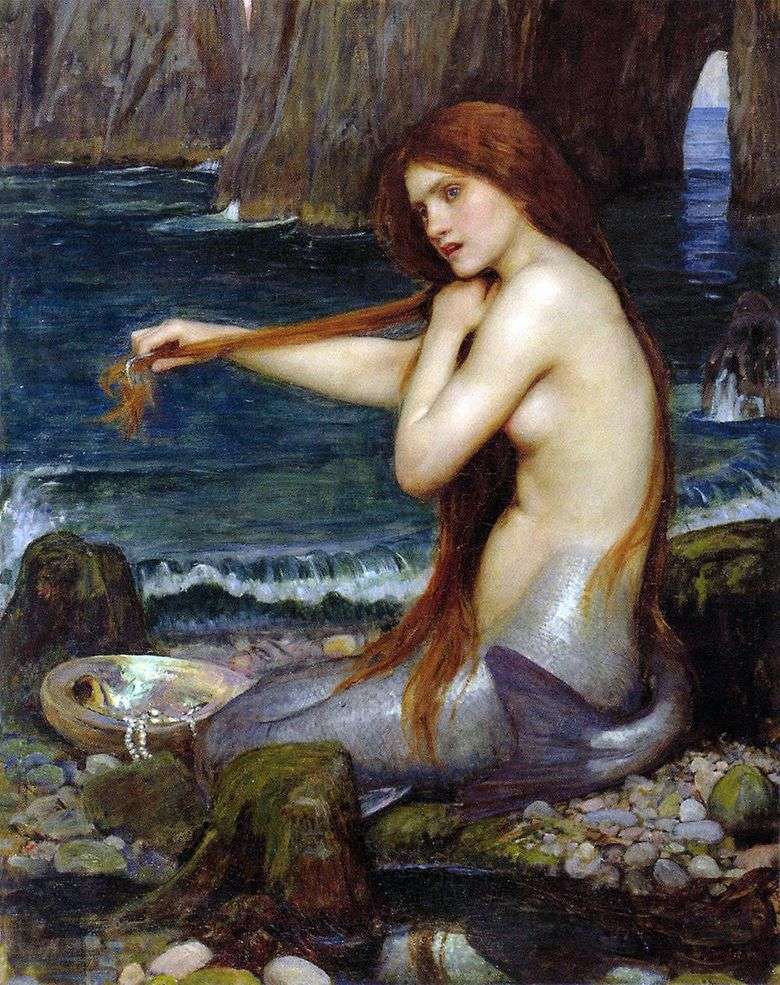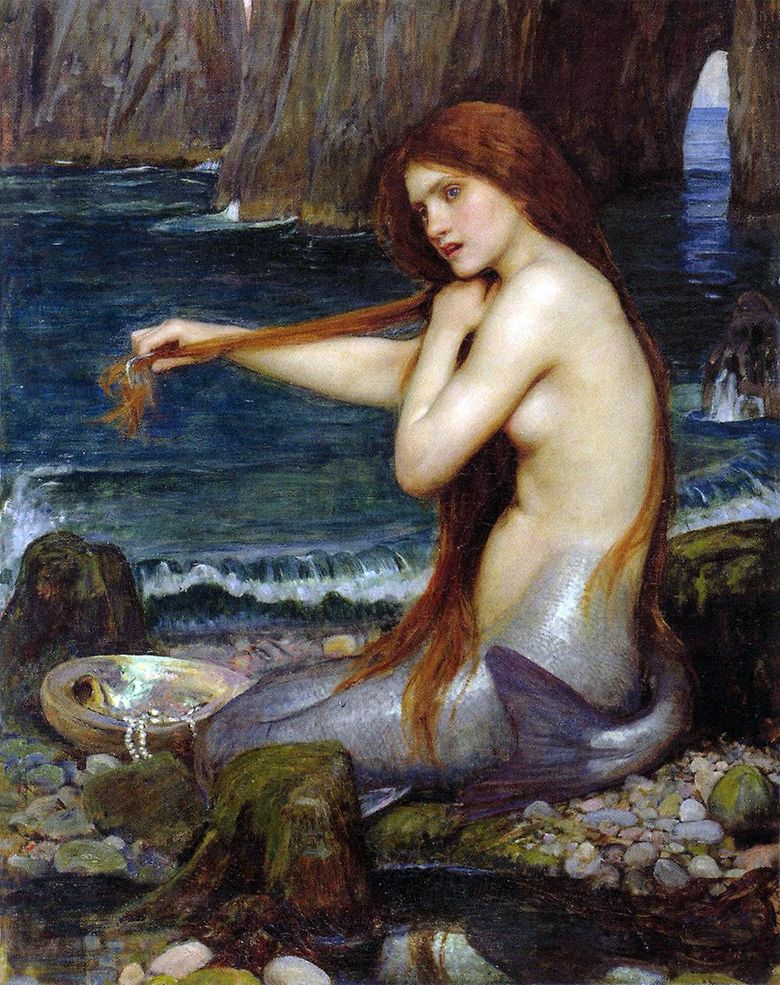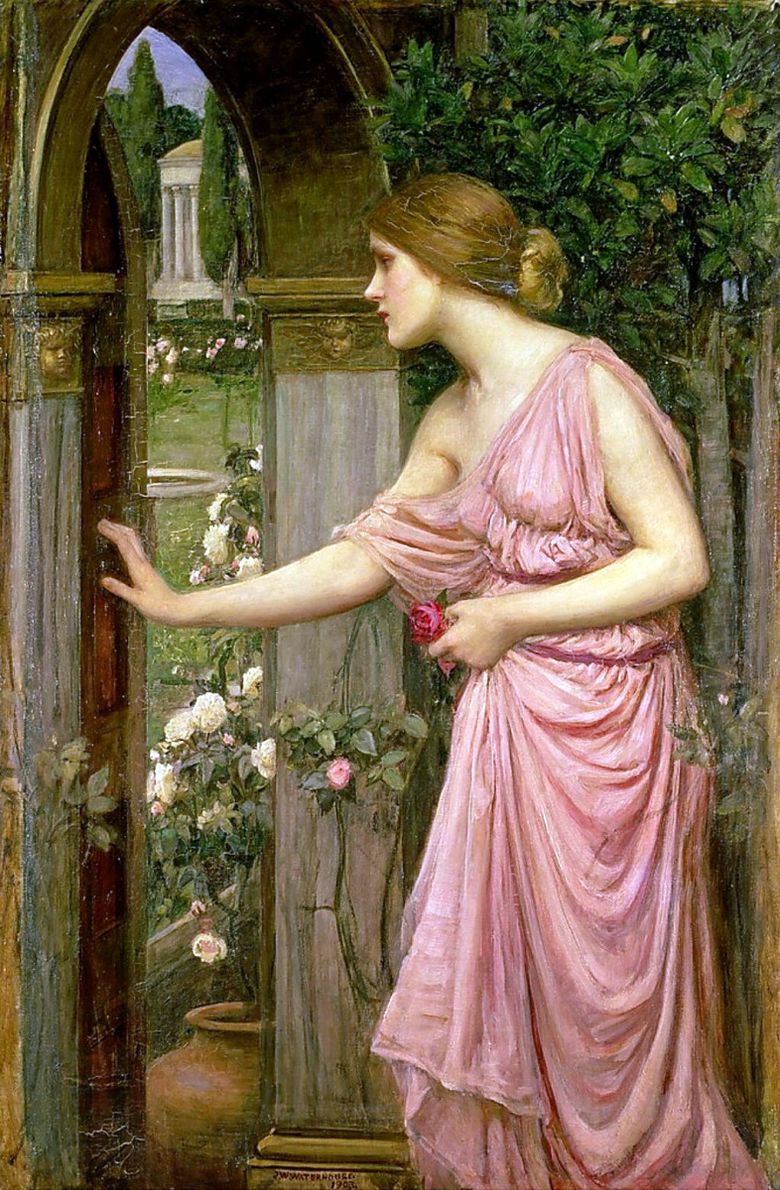
John William Waterhouse – painter of the English school and a follower of ancient writing techniques, was an ardent admirer of female images. He closely intertwined women’s beauty with fairy-tale subjects, giving preference to the mythology of ancient Rome and Greece, while the heroes of the Slavic epos flashed past his works. An example of the Slavic theme was the canvas “Mermaid”, written in the early XX century in the traditions of Pre-Raphaelitism.
Despite the relationship of the canvas to the period of Pre-Raphaelitism, it is difficult to call it antique until the final stroke. Perhaps, the manner of execution imitates the masters of early revival, but the plot is very different. This is not a religious scene or even a biblical story, but a fairy tale about a forest nymph or, in the interpretation of the Russian ethnographer D. Zelenin, a drowned woman. If the heroine with the fish tail does not have any complaints, then to the manner of writing they are available. The canvas strikes too dry a letter, so unlike many of the author’s works. For some reason, there is little light, little shadow, everything is monotonous and monotonous. There are almost no glares, so the objects seem flat and glued. Even the Mermaid looks artificially placed in front of the background.
In the drawing a lot of superfluous outlines, too contrasting, dark, clear. This gives the applicability to the plot. Ignoring the letter unusual to Waterhouse, I want to talk about the composition of the picture. It is good for having large details, in particular girls – Mermaids, and dividing into horizontal and vertical planes, and small ones – it is a bowl with beads and a scattering of stones on the shore. The fairy-tale maid came out cold, sad and deadly pale, as it should be. Another stamp in the image of the Mermaid is her long hair and comb, which divides the tangled mop up into small strands. The silence that reigns around gives a feeling of anxiety and longing. It is very cold due to the water color of arsenic and aspidum-gray moss on boulders.
Despite the loneliness of the mermaid and the emptiness in her eyes, I do not want to warm neither those hands, nor the shoulders. She is so cold and dead, that the spectator is pierced by a small swell. Rejection is also caused by the desolate landscape of the deep blue sea, as though Waterhouse deliberately discolored the joyful colors of life at the tail of a female fish.
 Miss Margaret Henderson by John Waterhouse
Miss Margaret Henderson by John Waterhouse Psyche opening the door to Cupid’s garden by John William Waterhouse
Psyche opening the door to Cupid’s garden by John William Waterhouse Vanity by John Waterhouse
Vanity by John Waterhouse Juliet by John Waterhouse
Juliet by John Waterhouse Sirena – John William Waterhouse
Sirena – John William Waterhouse Sirène – John William Waterhouse
Sirène – John William Waterhouse Psique abriendo la puerta al jardín de Cupido – John William Waterhouse
Psique abriendo la puerta al jardín de Cupido – John William Waterhouse Psyché ouvrant la porte du jardin de Cupidon – John William Waterhouse
Psyché ouvrant la porte du jardin de Cupidon – John William Waterhouse